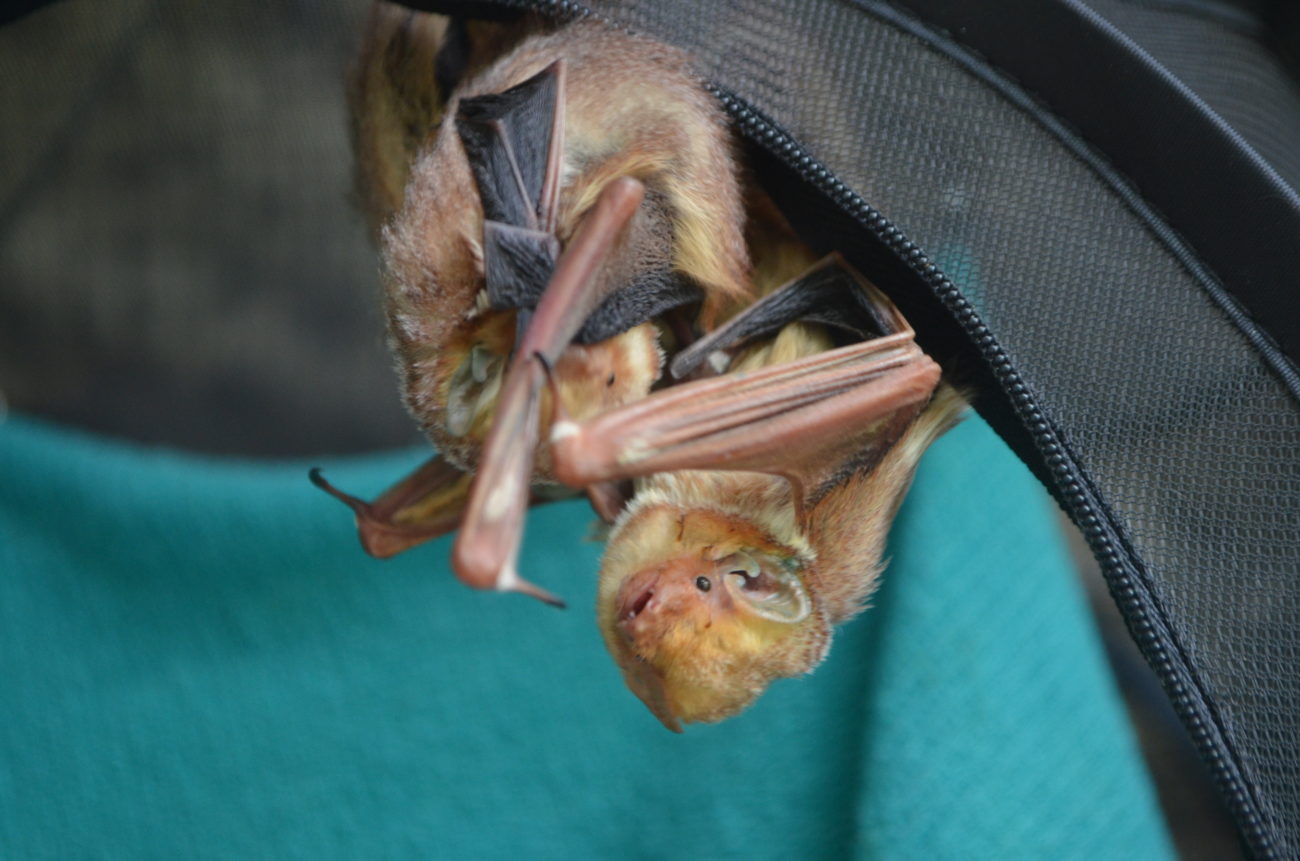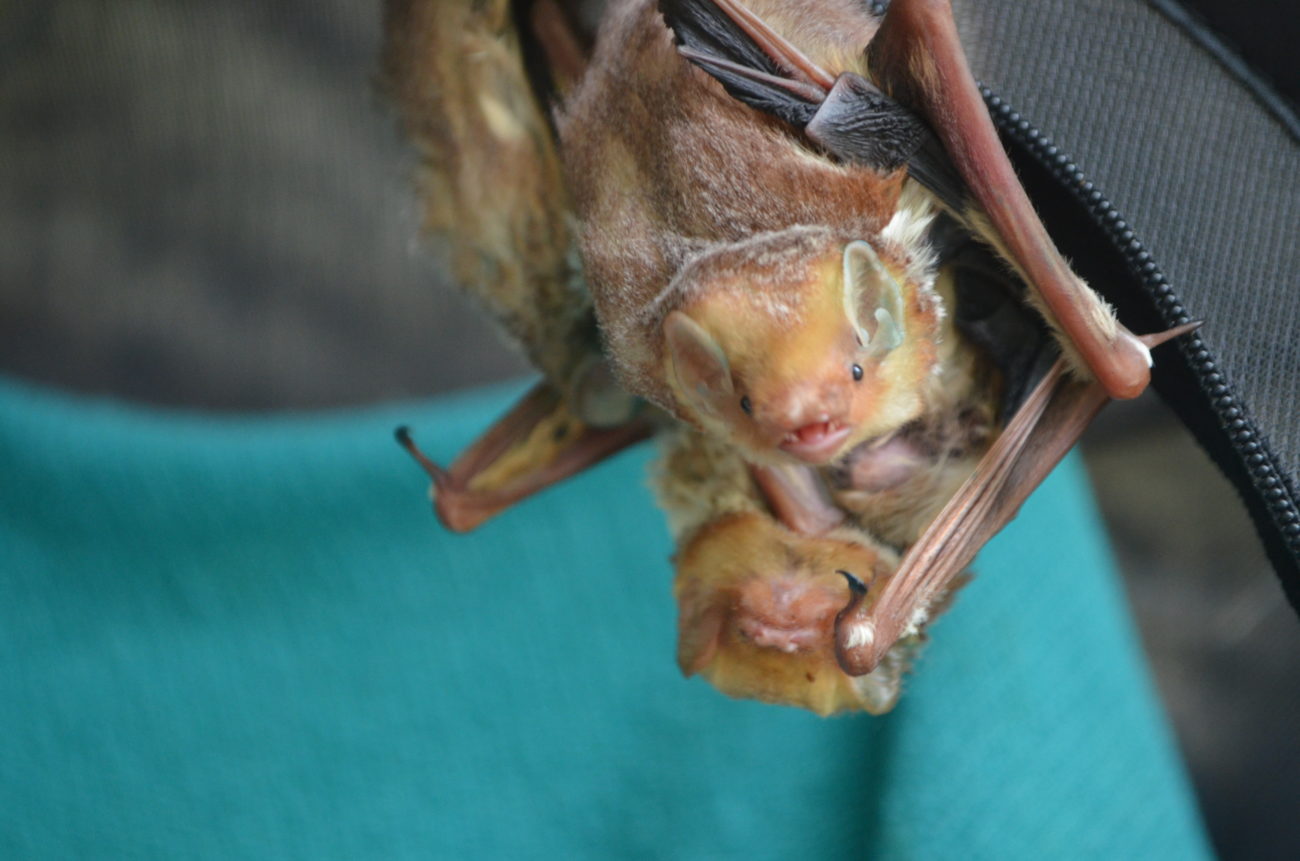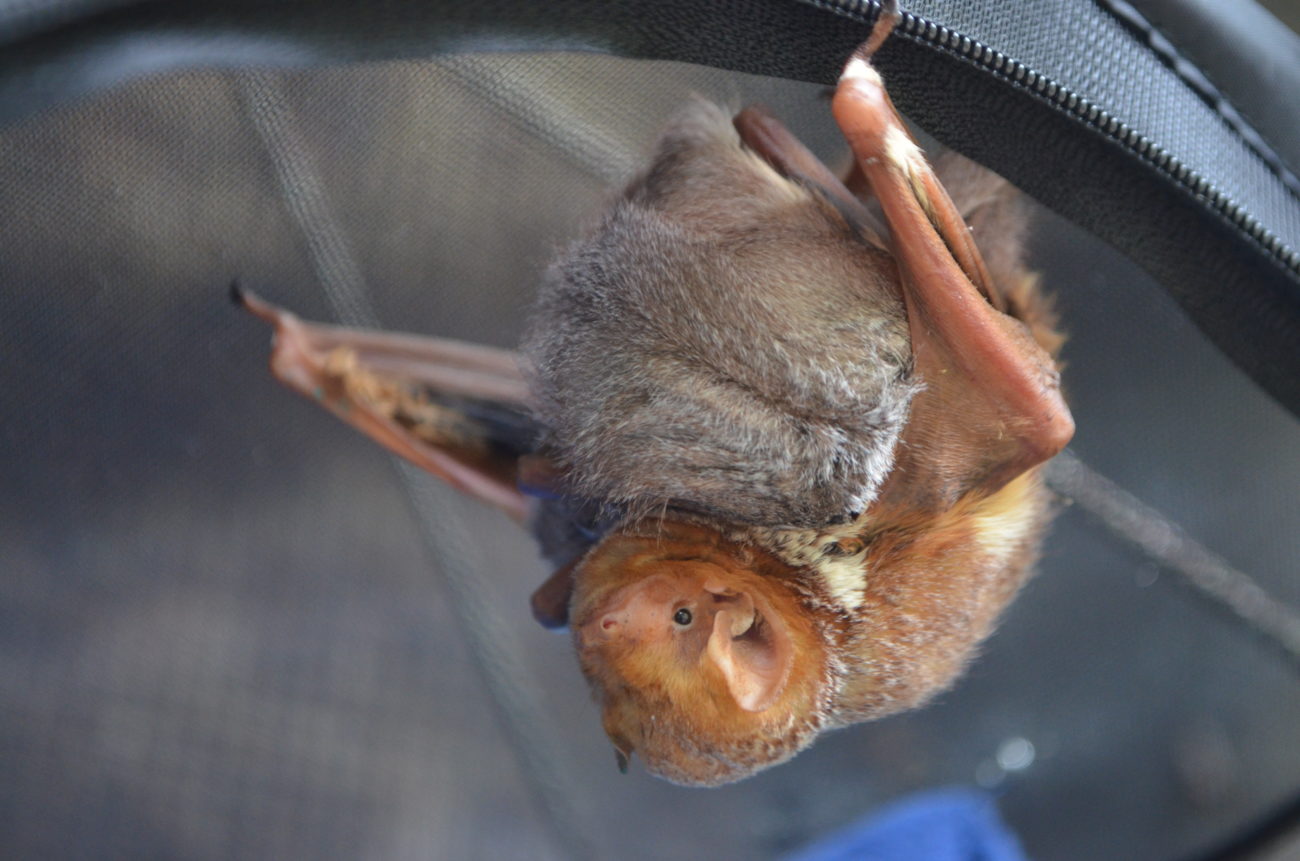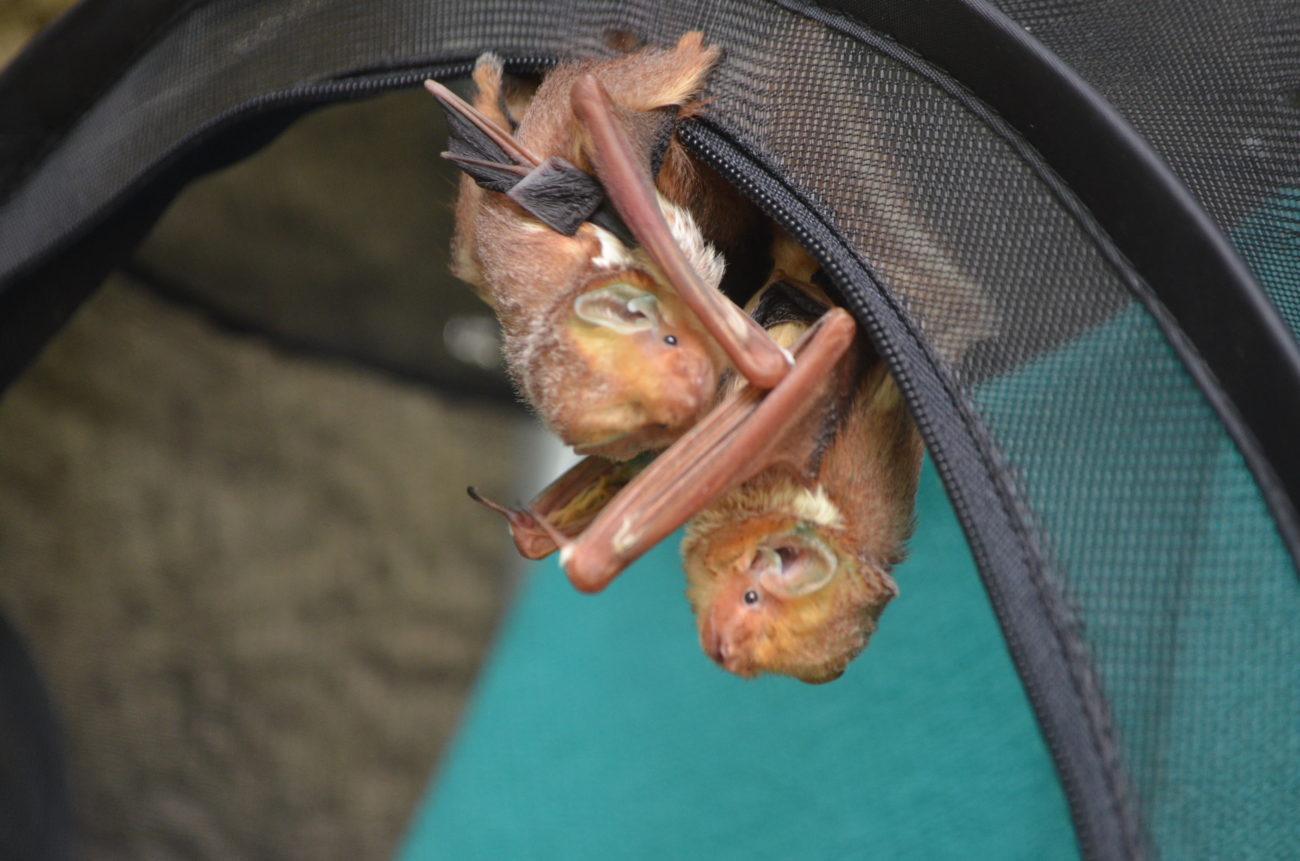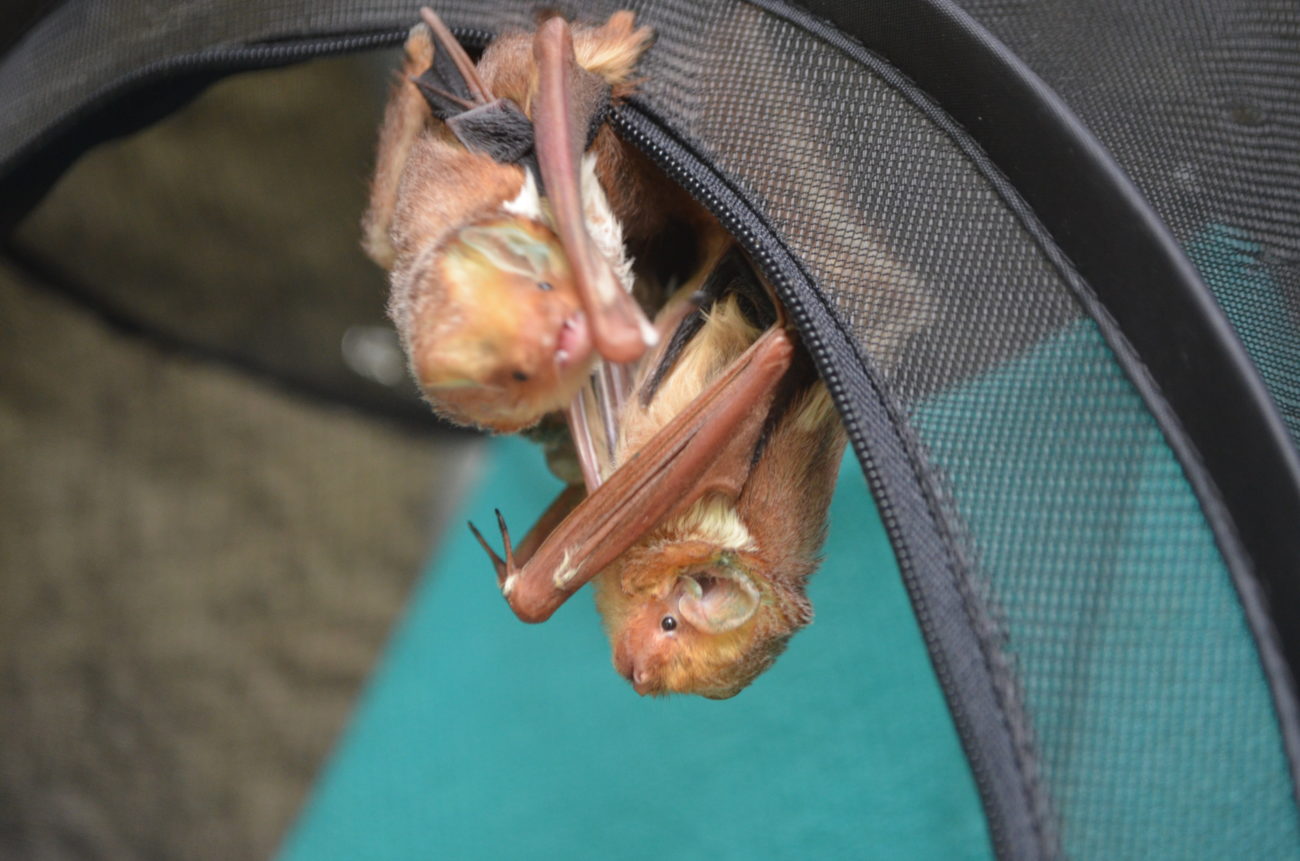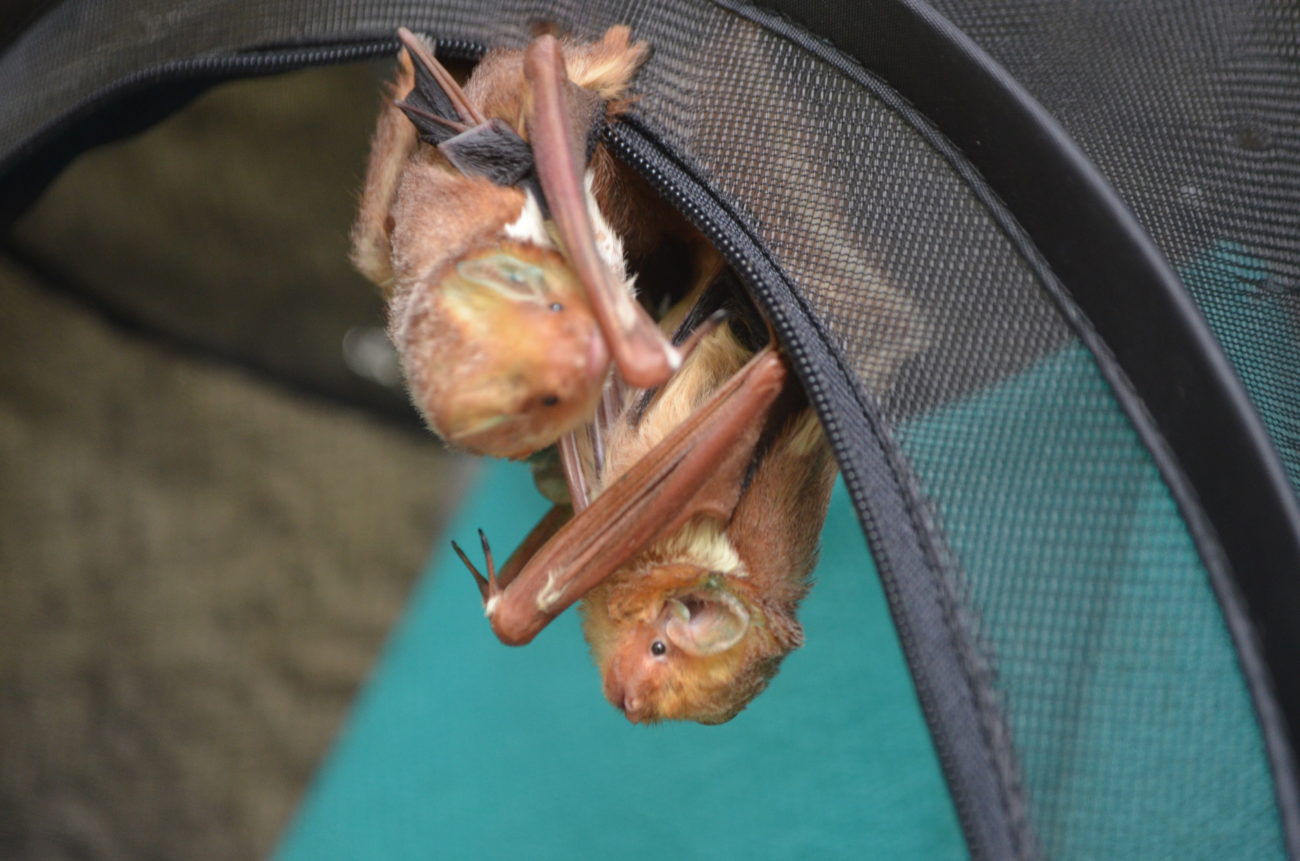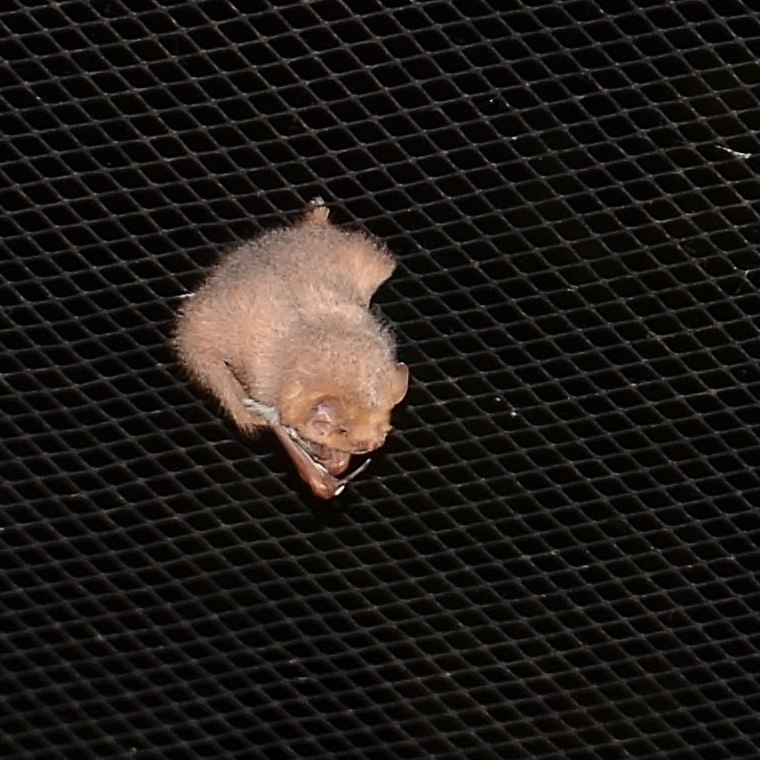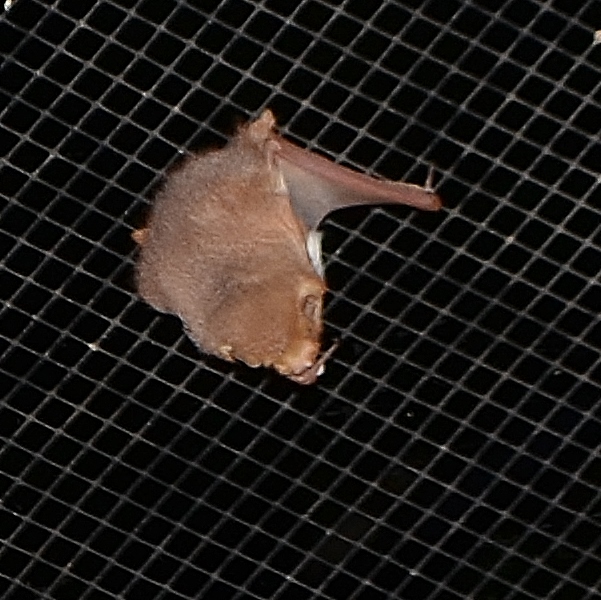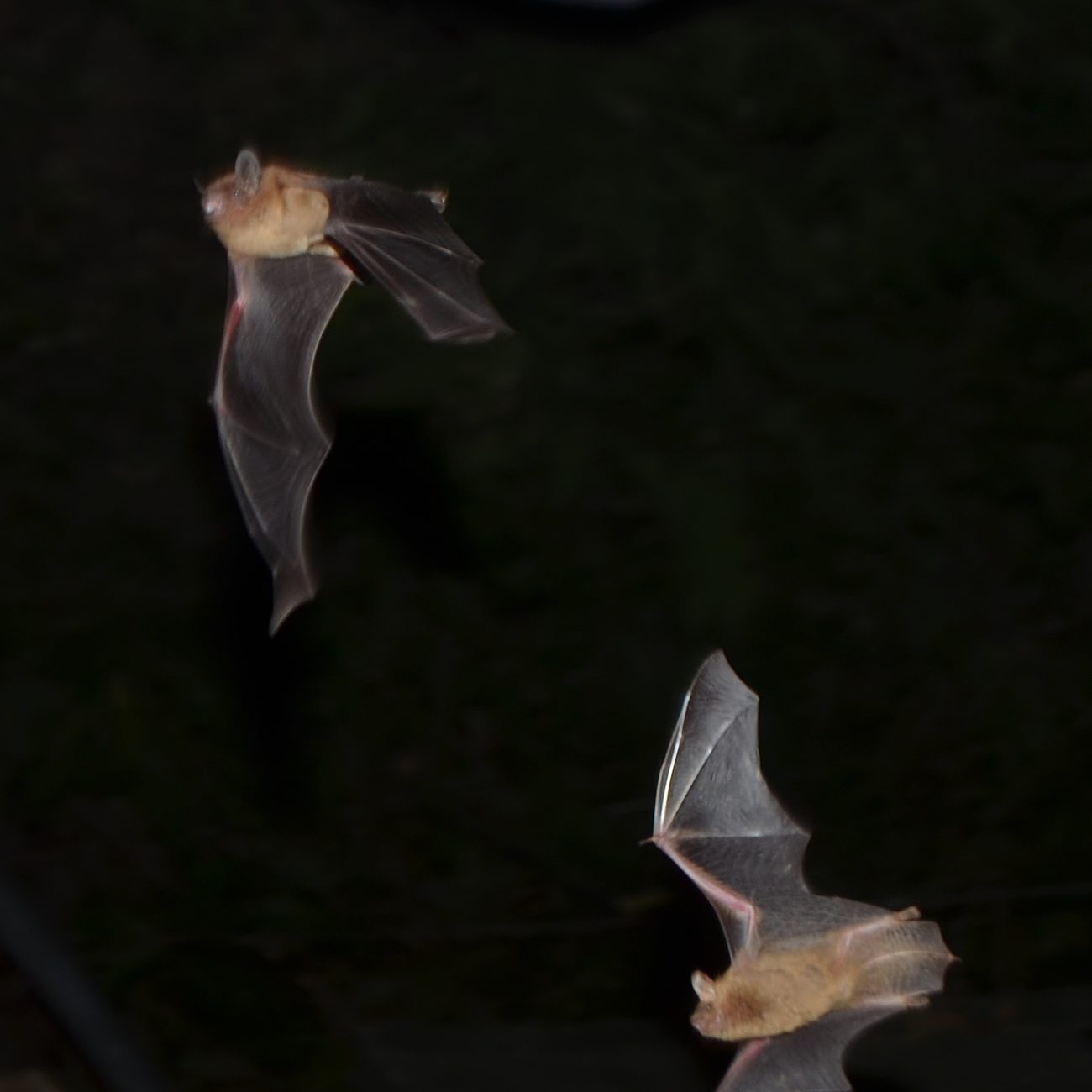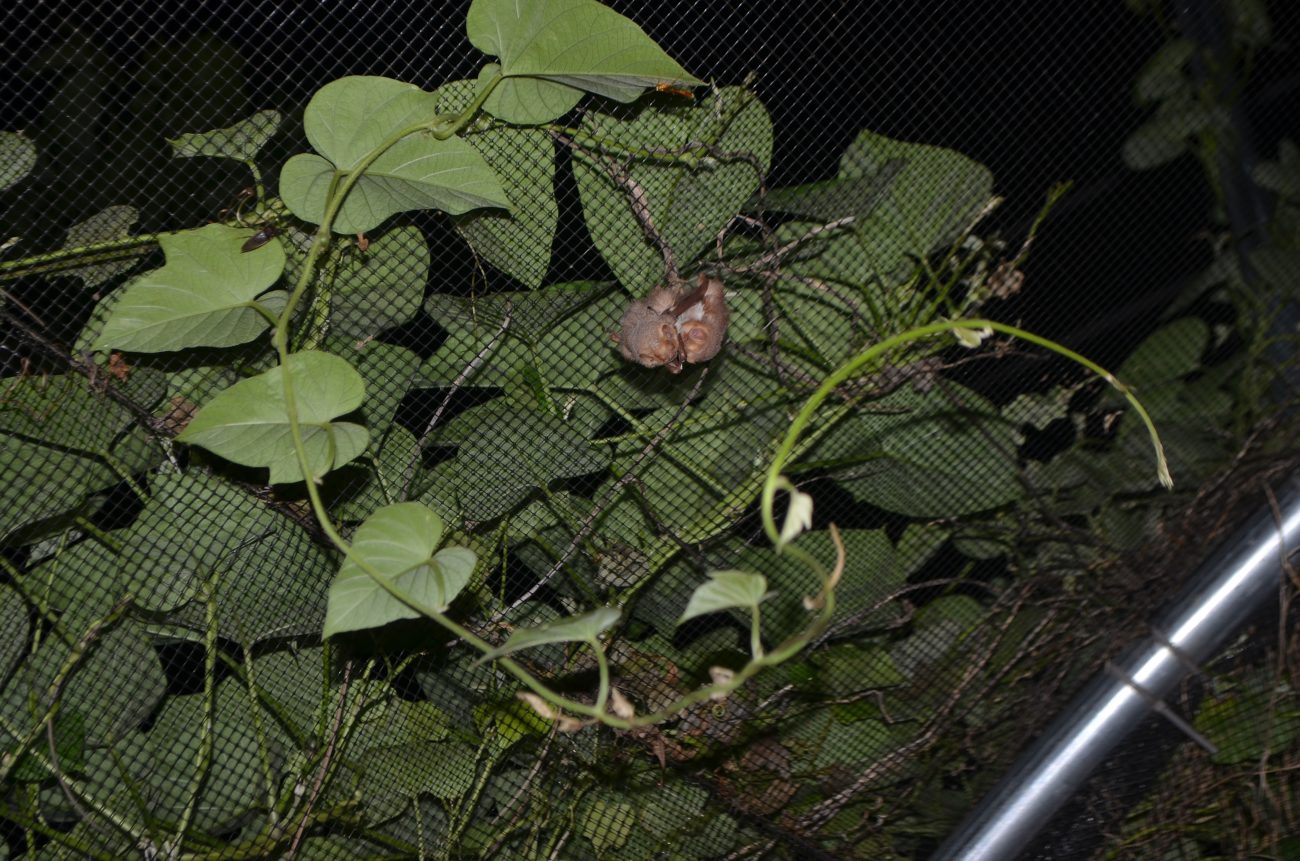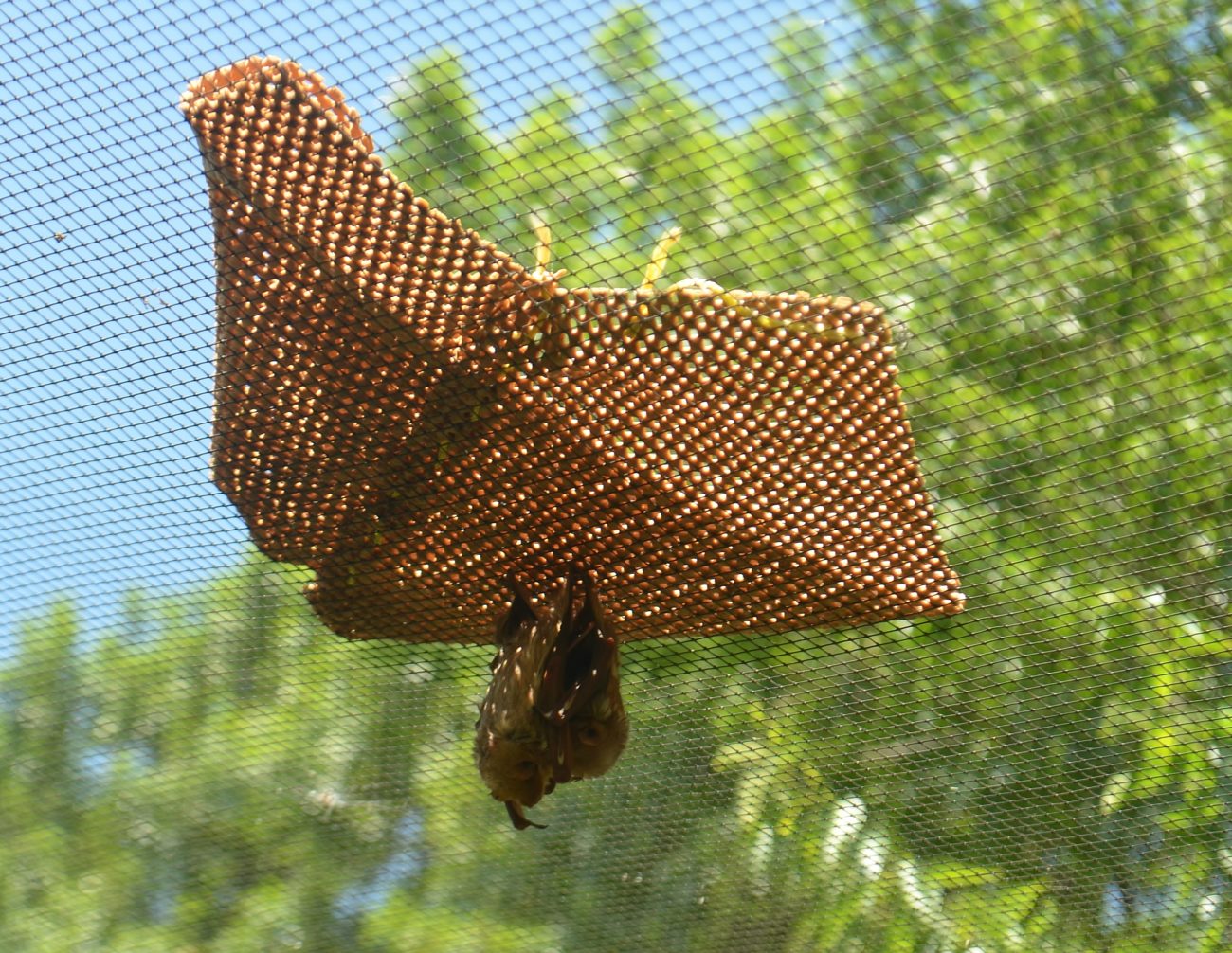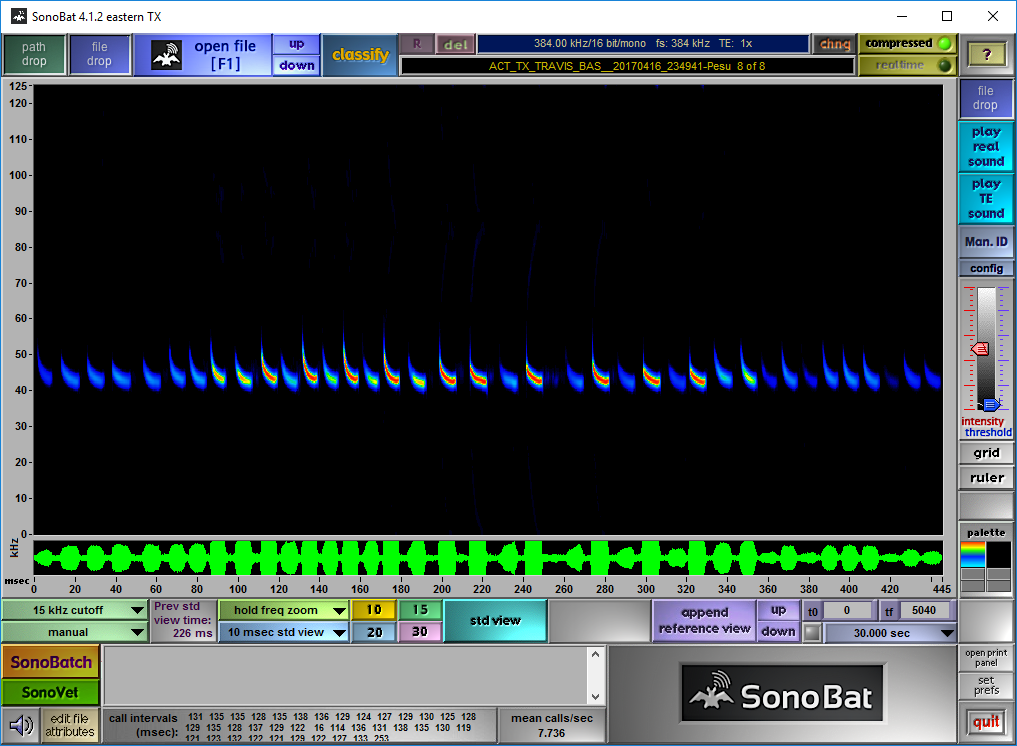Yes, we had the nets set out last night, but they were high in the sky and our targets were night-flying insects, not fish.
We got a very generous invite from John Westbrook of the USDA’s Agricultural Research Service to join him and his field tech, the intrepid Mike O’Neil, along with Jason Lim from Rothamsted Research, United Kingdom, for a night of sky fishing in Central Texas.
John is one of the pioneers of radar entomology and the study of the interaction of insects and bats in the aerosphere. His early work with Merlin Tuttle, Tom Kunz, and Gary McCracken was crucial in understanding the role of bats in integrated pest management and their role in the balance of nature. Here is a link to his current study: Monitoring Pest Insect Migration With a Vertical-Looking Entomological Radar https://www.ars.usda.gov/research/project/?accnNo=426761
Jason Lim, of the Radar Entomology Unit at Rothamsted Research, has become the lead builder and software developer for the Vertical Looking Radar (VLR), deployed in only four locations around the world (one in Seguin, TX), to study insect migrations. http://www.rothamsted.ac.uk/radar-entomology-unit/. Jason has taken the reigns from Jason Chapman, now that Jason C. has moved on from Rothamsted Research to Exeter University.
Below is a look at a VLR installation and some insect migration tracking data.
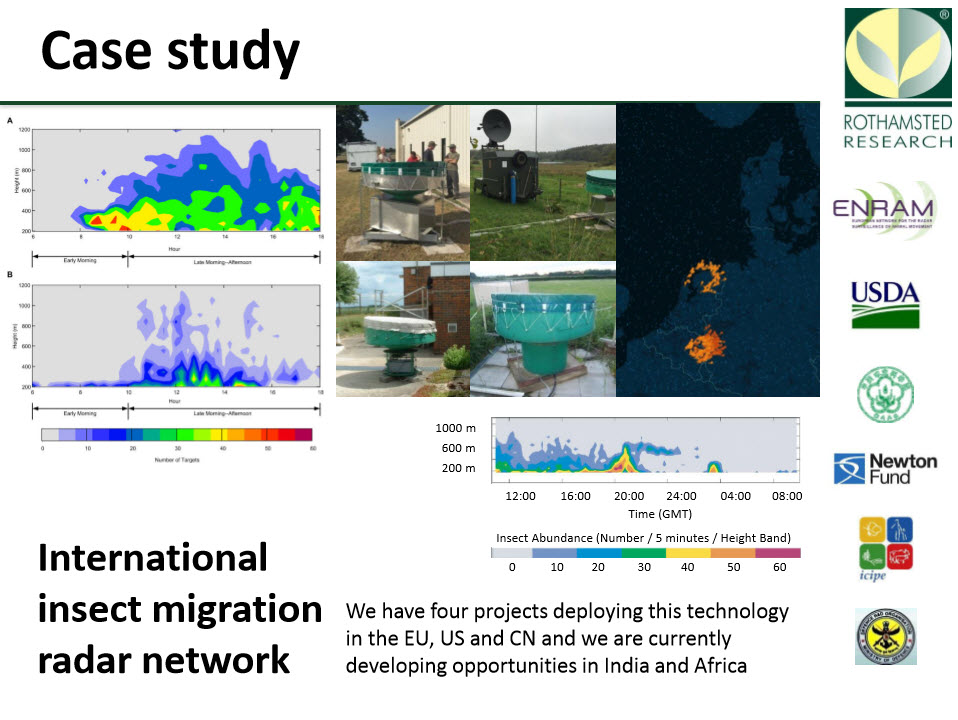
We observed (and stayed out of the way) as they (John, Jason, and Mike) deployed a 3.3 meter diameter HeliKite to tow a 1 meter diameter collection net up to 200 meters altitude to sample insects riding the lower jet, as they migrated north with the season.
The VLR (installed a few miles away) tracks migrating insects by quantifying the density, displacement speed and direction, and flight heading of insects at distinct heights.
Our catch will help calibrate the radar data, classifying the insects by their body mass, body shape, and wingbeat frequency, into functional groups of insects, so we know what kind of insects are flying where and when.
Here John notes conditions in his field journal while Mike and Jason start to deploy the kite. |
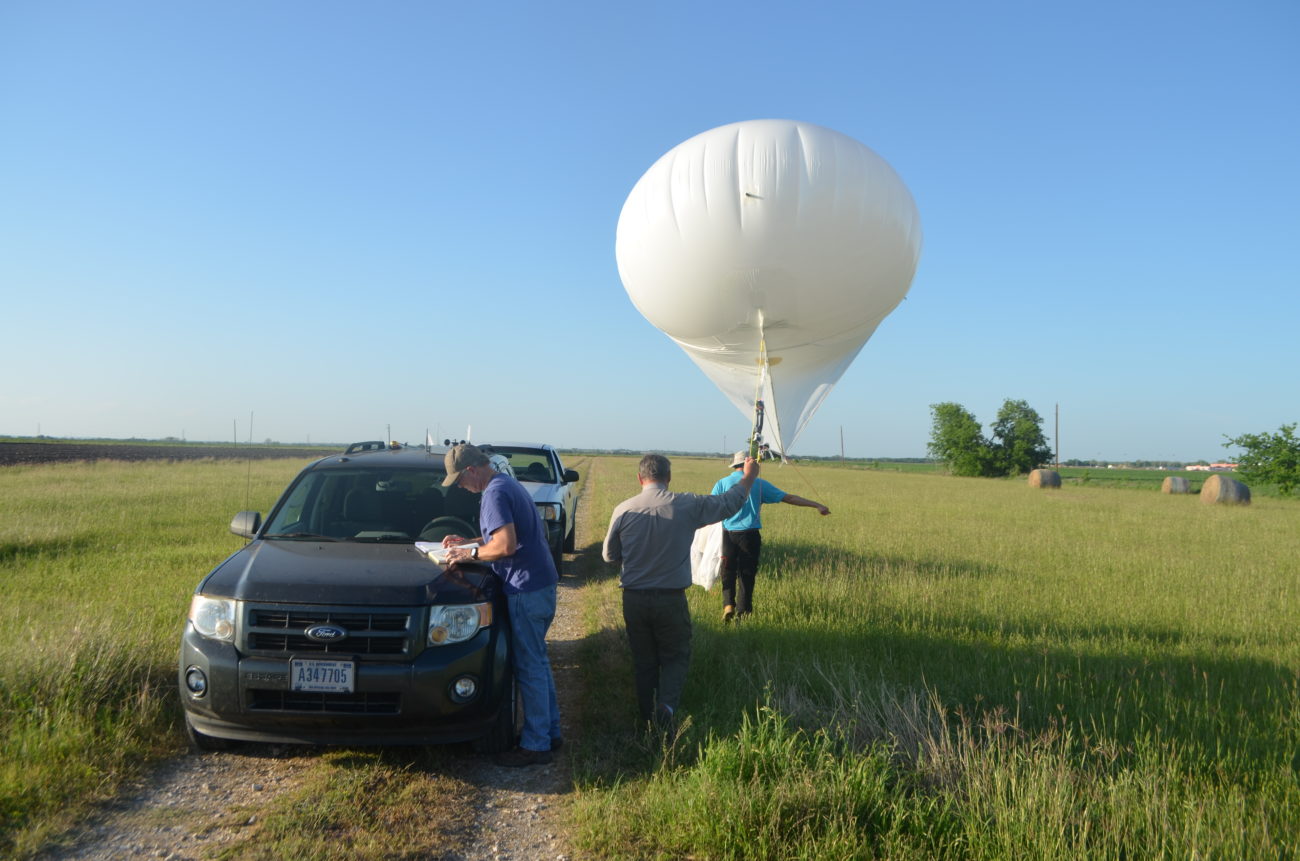
John attaches the tether sond, which sends atmospheric data back to his laptop. It also tells them when winds are approaching dangerous speeds and must be monitored closely so as not to snap the cable and lose the kite.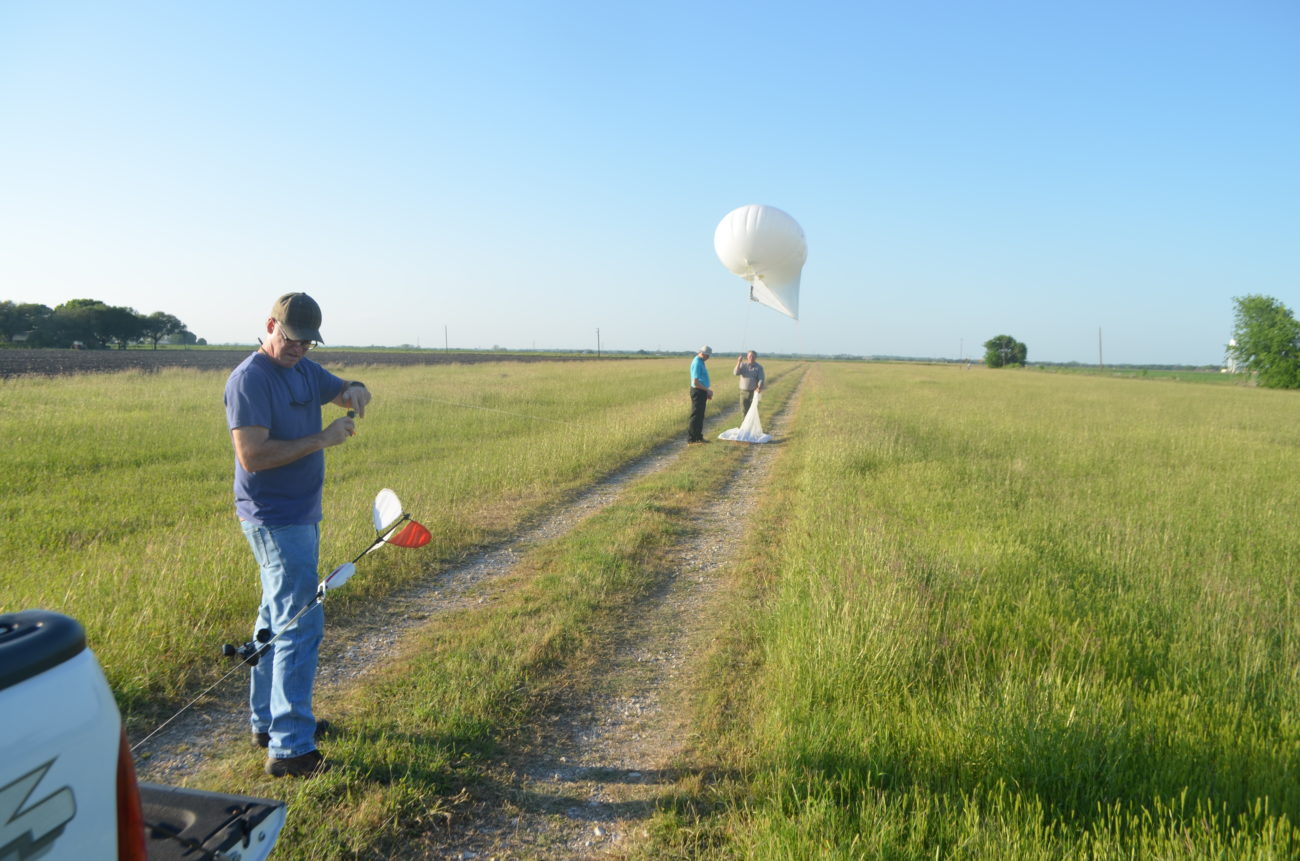
The kite is deployed with the catch net 7.5 meters below. The net will stay at 200 meters above ground level for four hours.
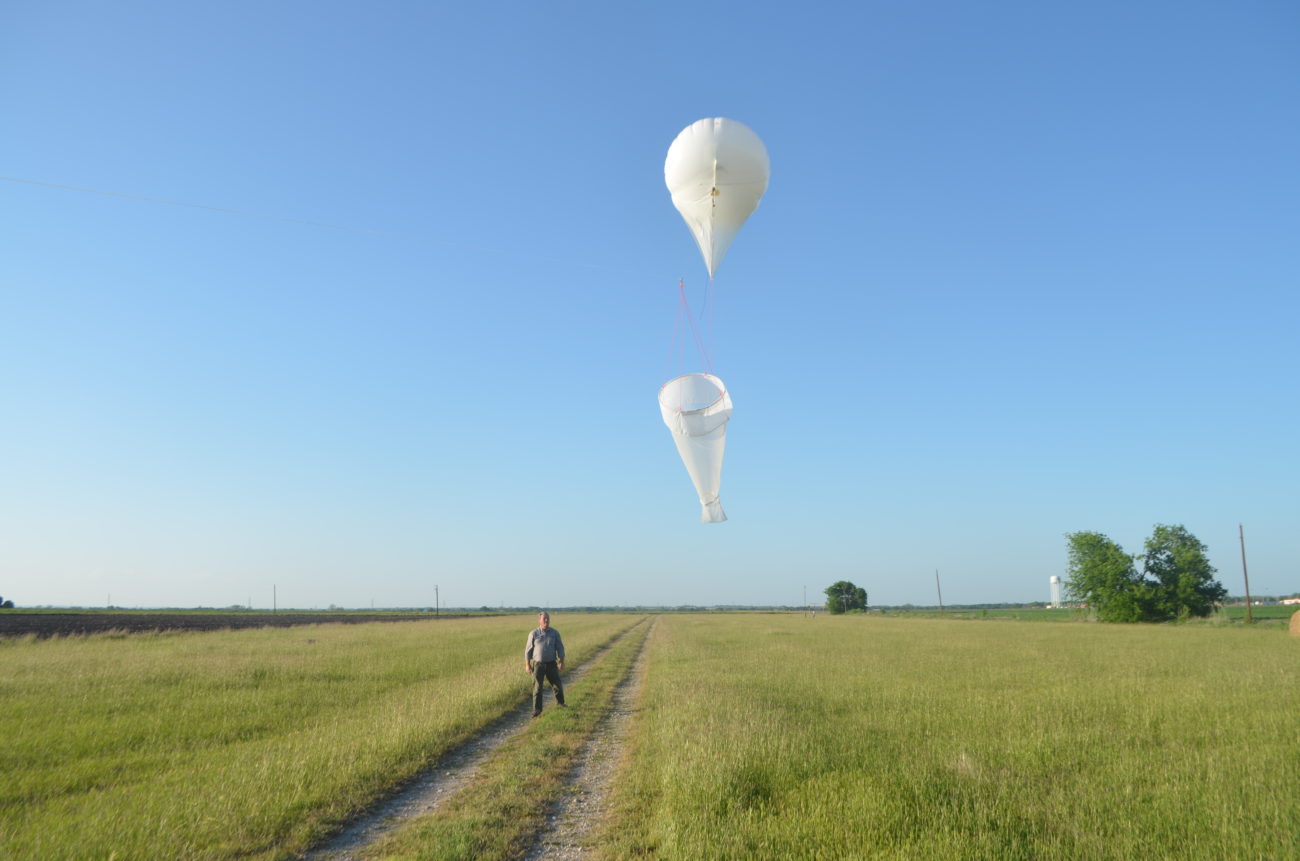
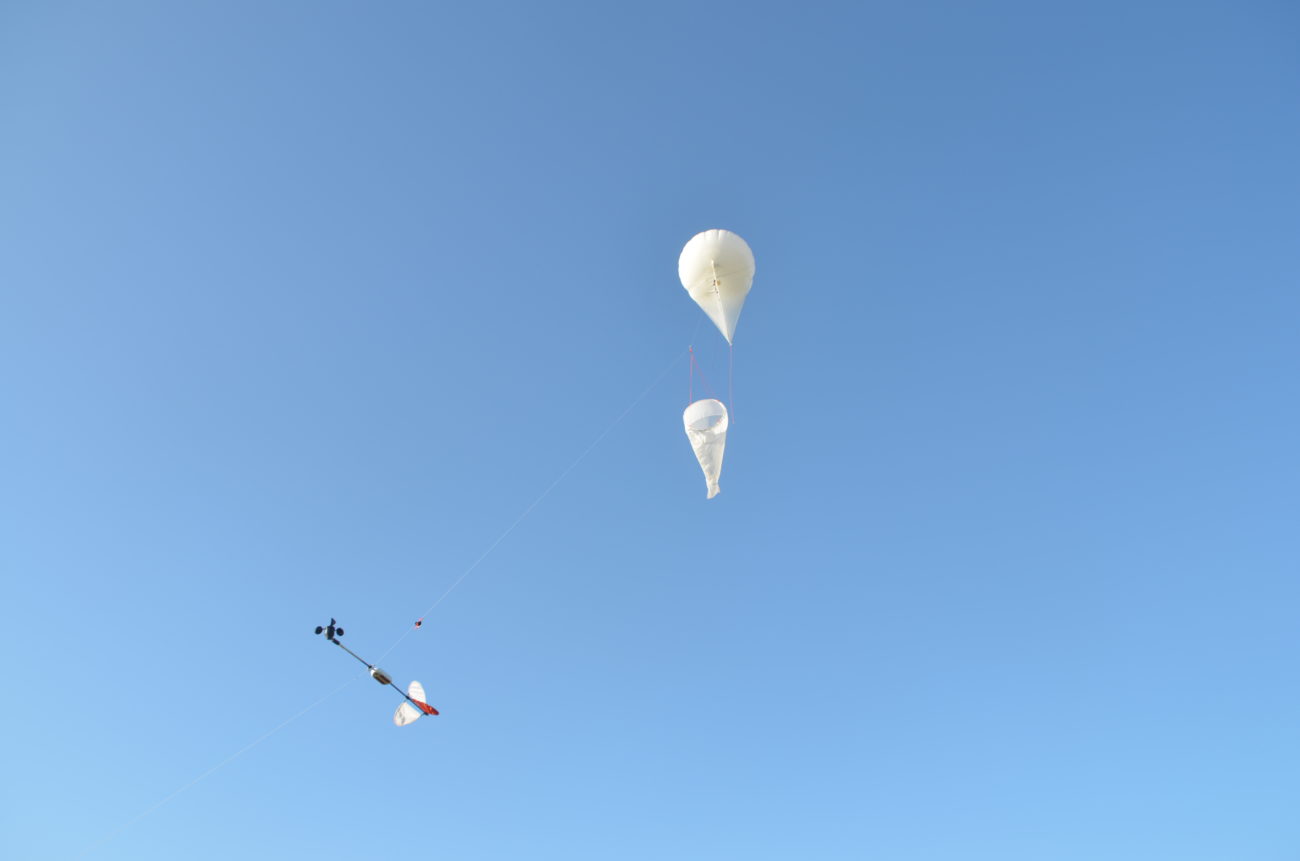
Pheromone traps told them which species were present in the local fields. Here is a Corn Earworm Moth. Note the dot on each outer wing and the smudge on the inner wing.
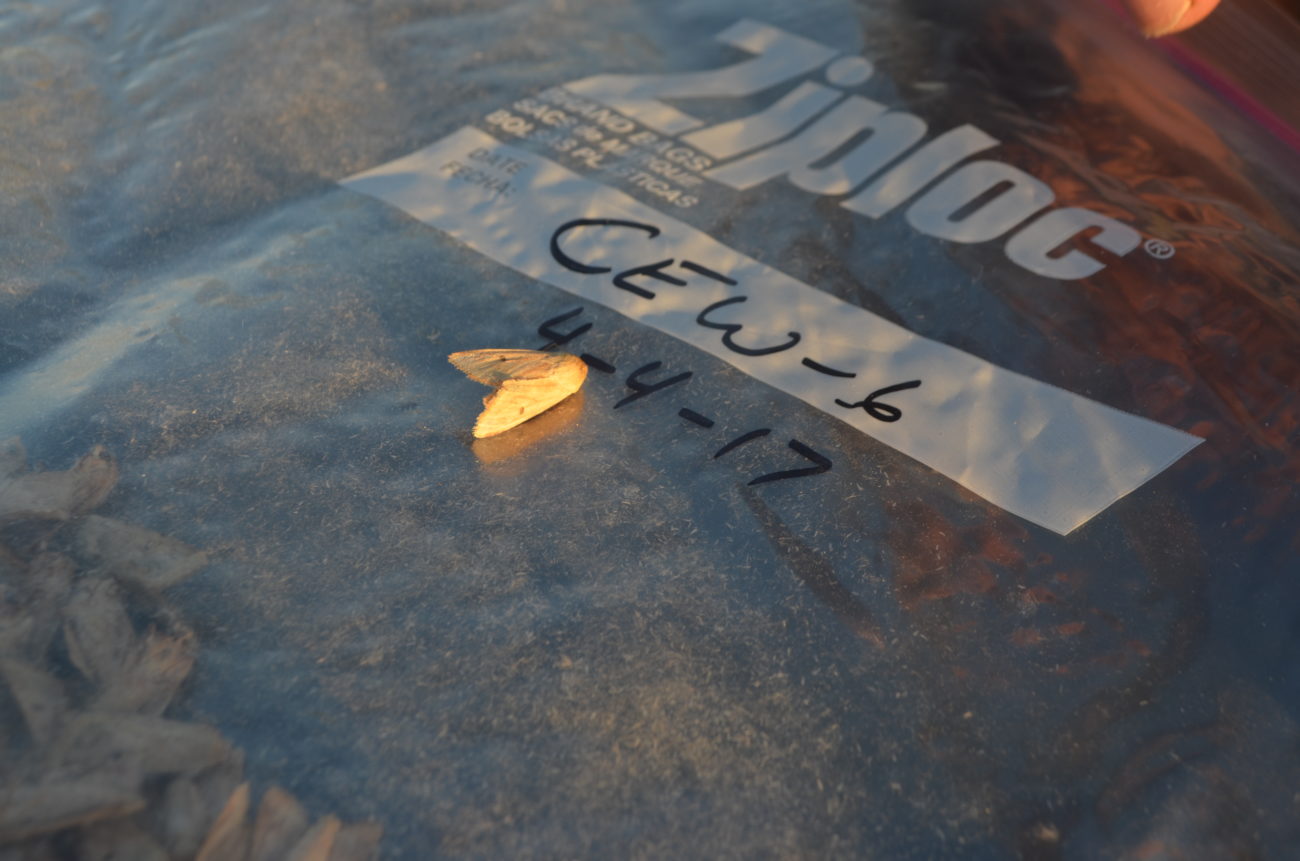
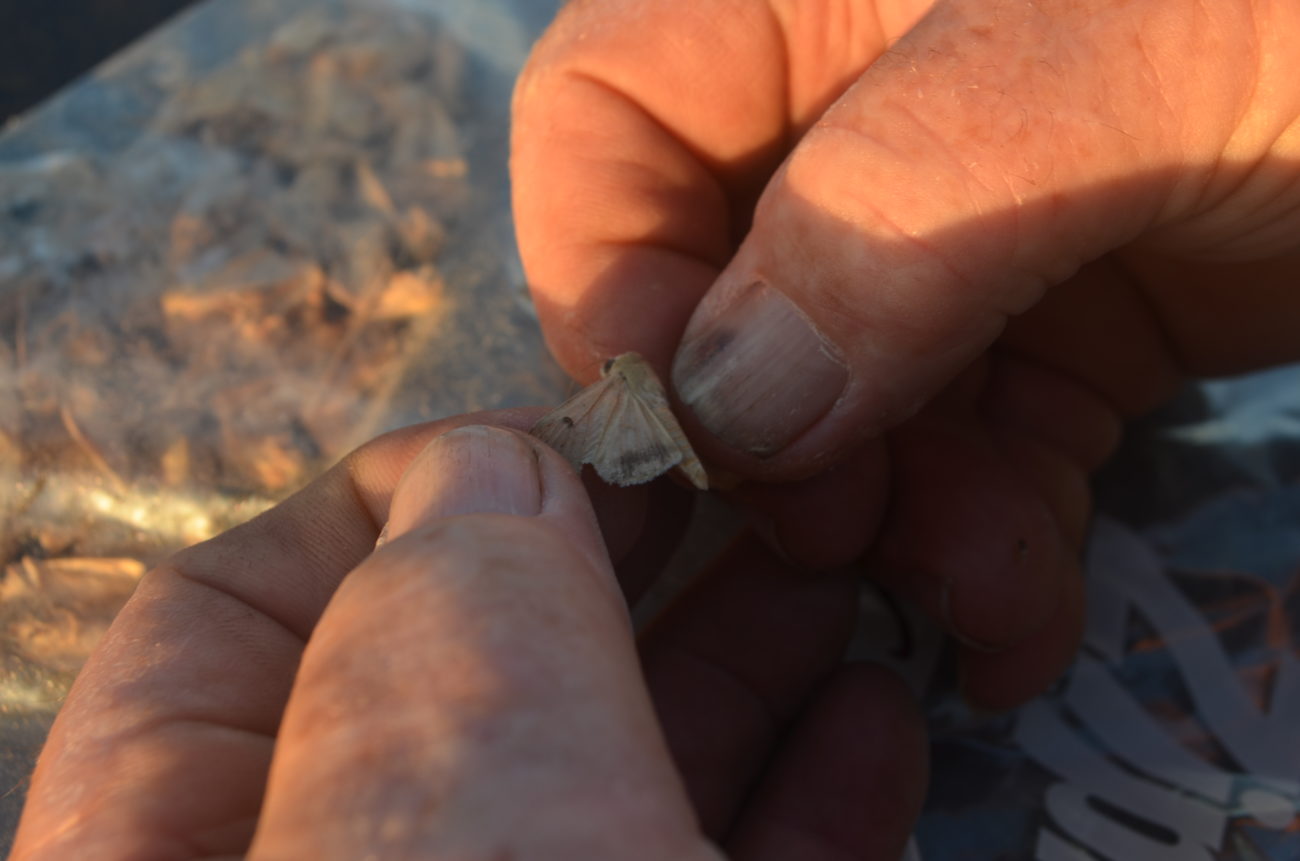
Below are Fall Army Worm moths, much smaller than the CEW moth shown for comparison.
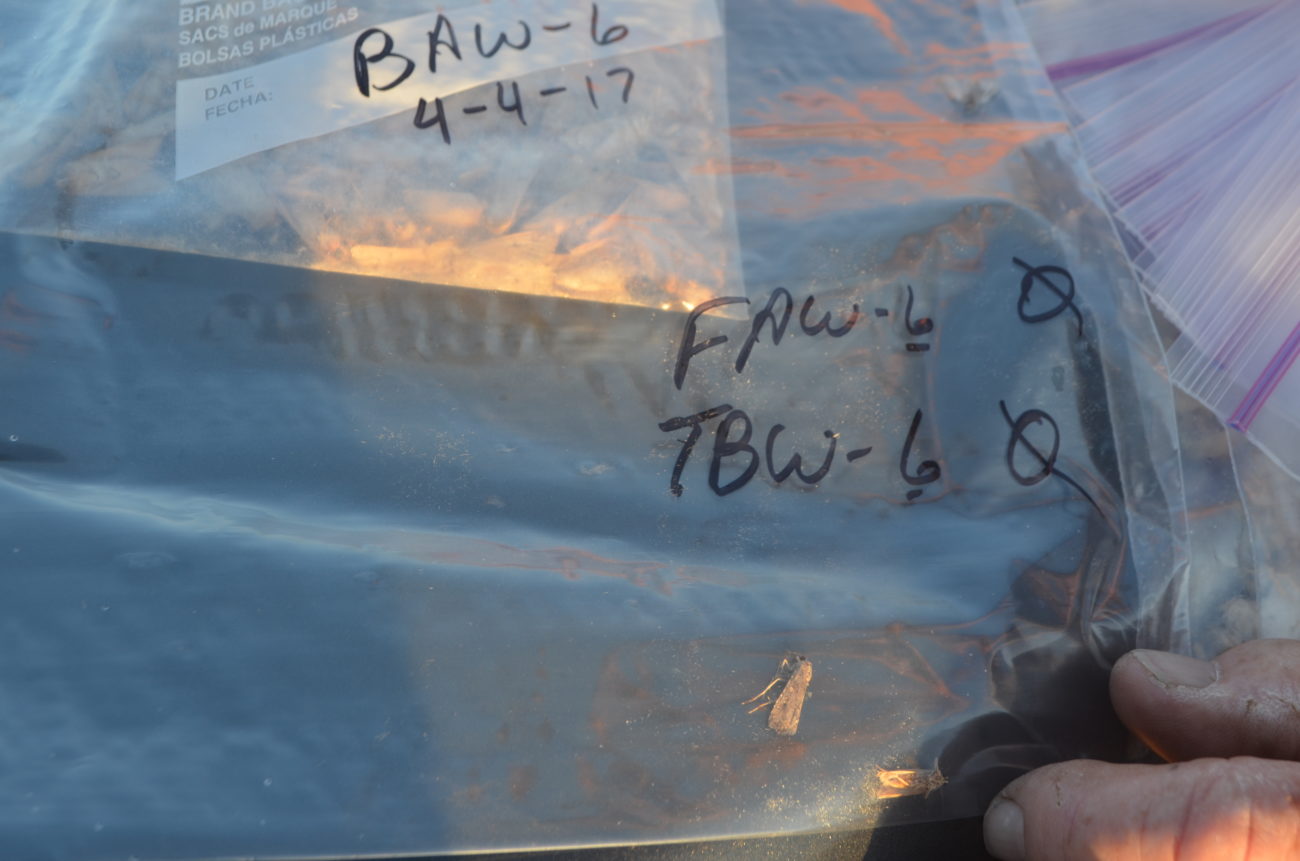
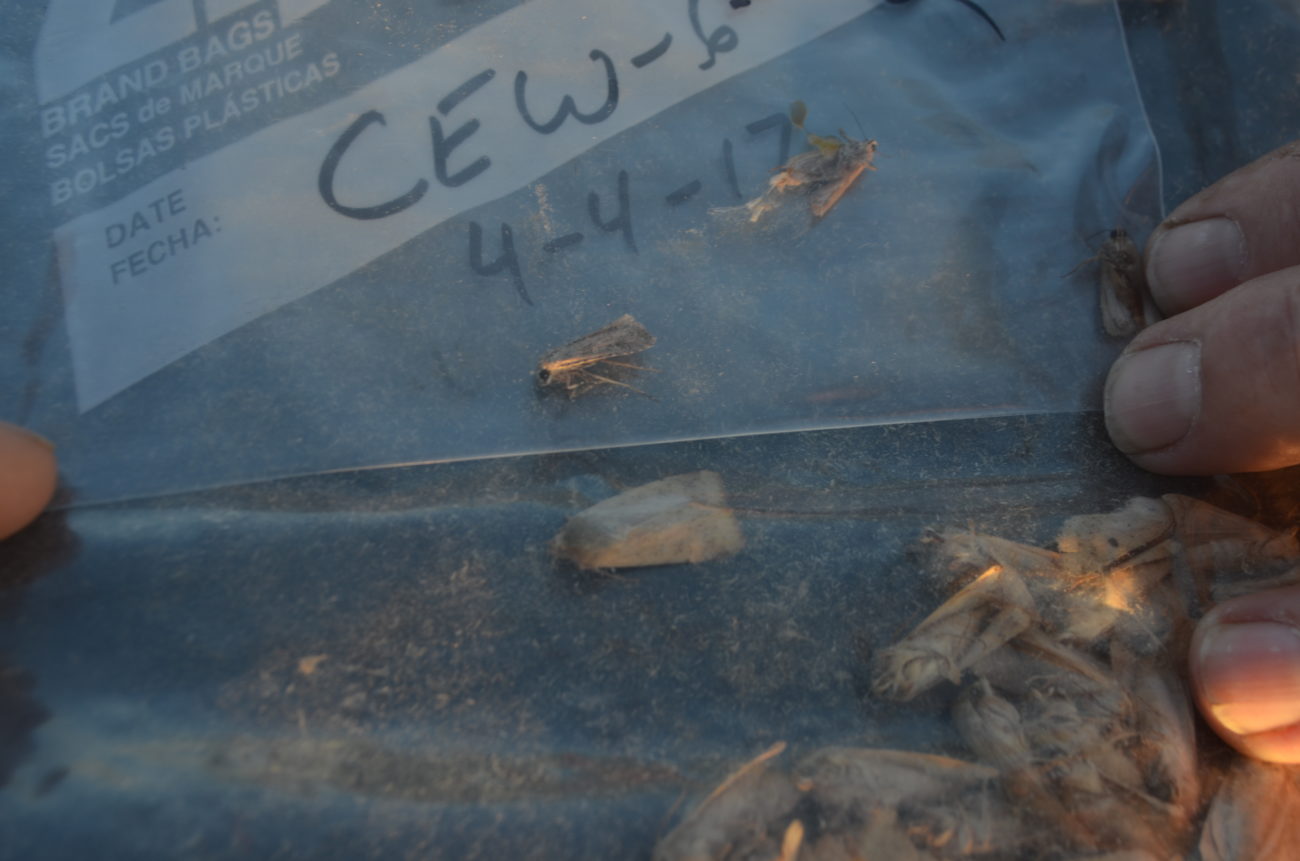
And below we have a Tobacco Bud Worm moth. Wavy lines on the wings help ID it.
Jason Lin tends the line as the net and kite soar high in the sky.
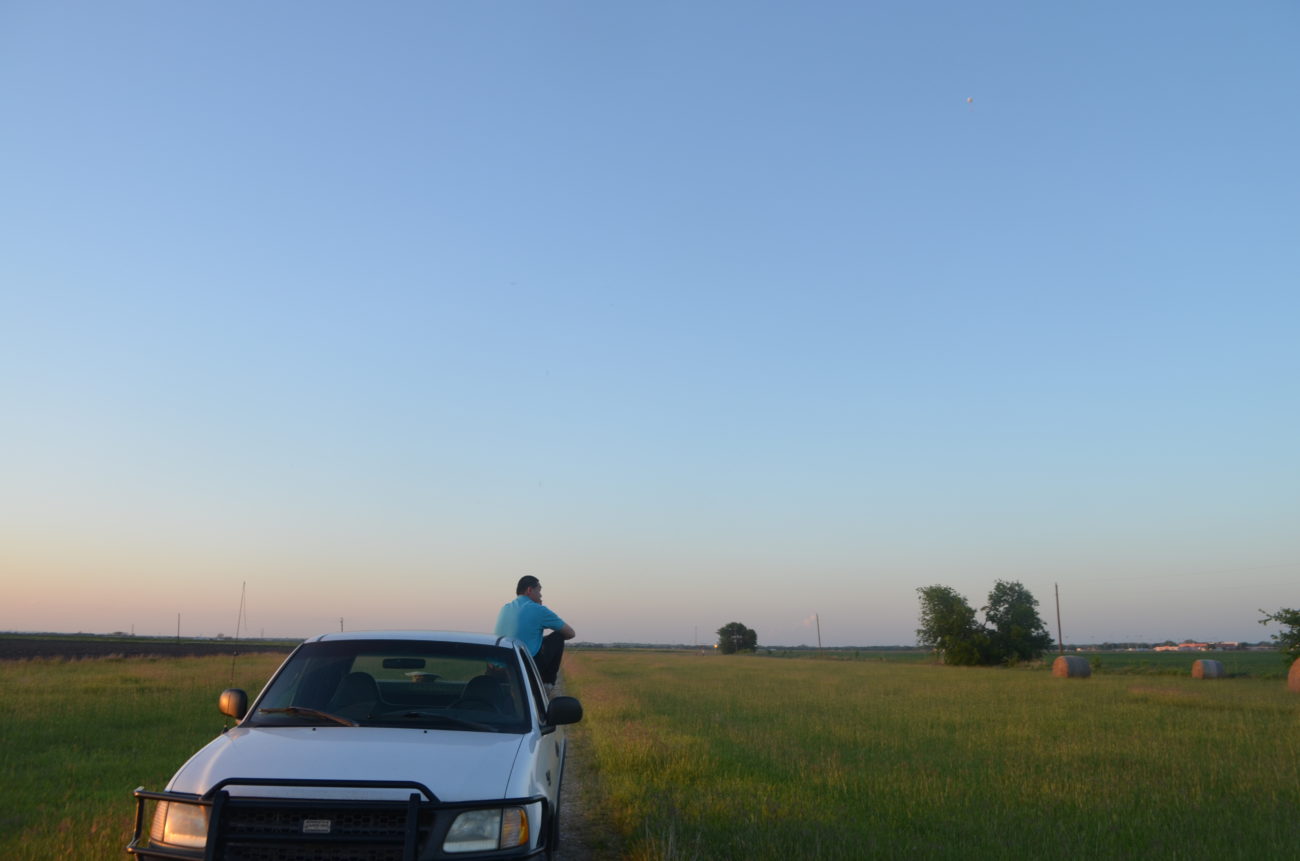
Monitoring conditions: The wind speed increased substantially later from this 6.5 meters per second to around 12 mps, giving the crew some heartburn as it reached the threshold of the line strength. The temperature was quite warm at 175 meters agl, and as the ground cooled with radiative cooling a temperature inversion occurred, allowing conditions for a slipstream of faster wind at 200 meters agl that insects used to their advantage in migration. Their flight speed of 5 mps added to the 12 mps (or 20 mps at times) allows them to cover lots of ground in a night (38-55 mph).

The helium balloon kite, collection net, and tether sond return to ground with the catch, around midnight.
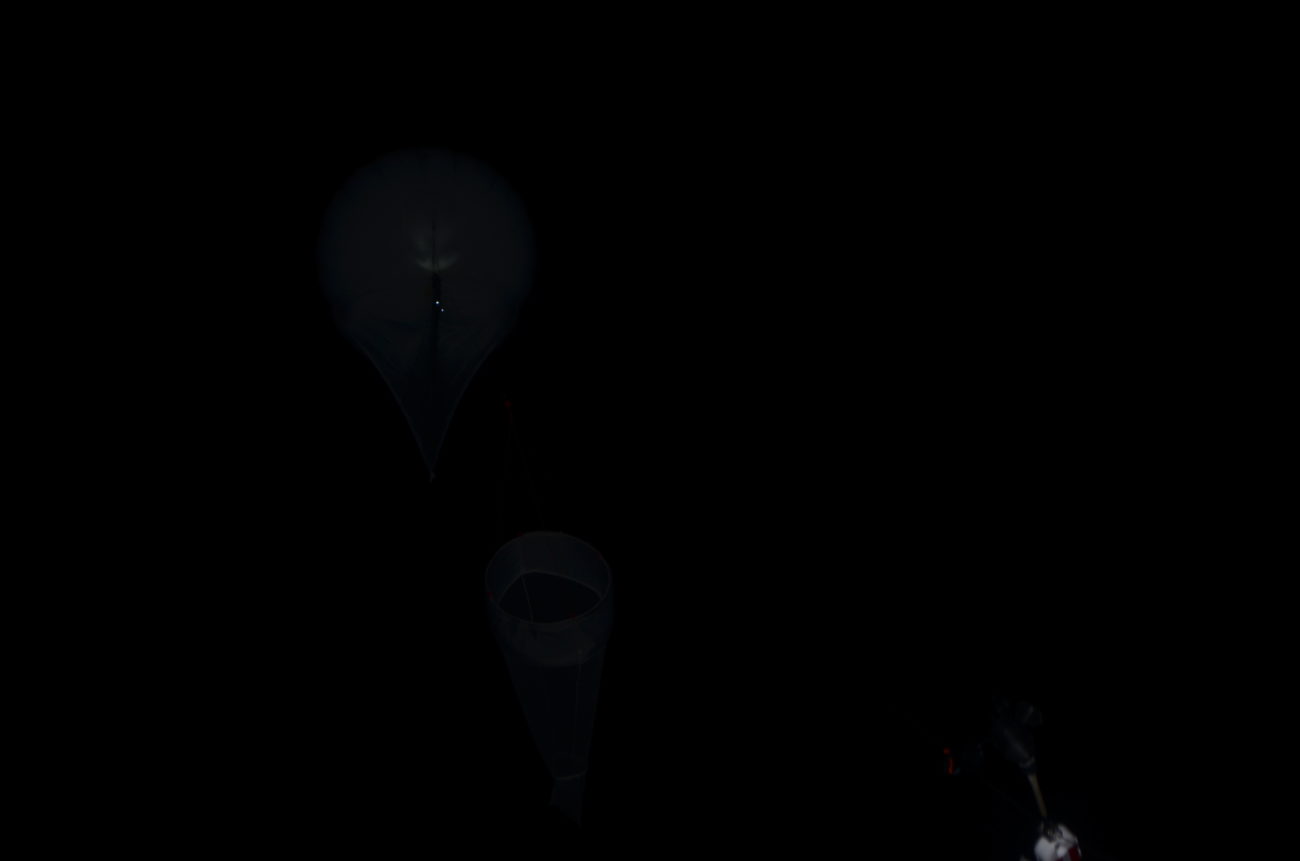
Quite a rig!

What an honor to be allowed to observe John, Mike, and Jason’s last night of fieldwork. Thanks so much to everyone for the generosity!
Here is an evening bat call collected one meter above ground level as the kite was flying. Next time we hope to convince them to take an echolocation recording device along for the ride (pipe dream!). Gary McCracken and Jennifer Krauel have done studies of the variation in echolocation calls of bats at altitude and will be returning this coming June as part of a study designed to correlate the VLR data with NEXRAD radar.
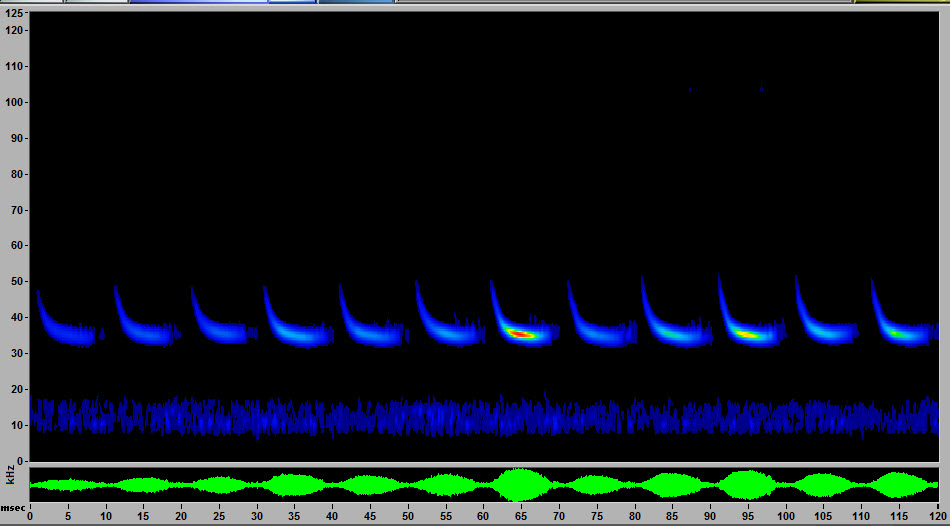

Research Project: Monitoring Pest Insect Migration With a Vertical-Looking Entomological Radar
Location: Insect Control and Cotton Disease Research
Project Number: 3091-22000-033-13-S
Project Type: Non-Assistance Cooperative Agreement
Start Date: Aug 1, 2014
End Date: Sep 30, 2017
Objective:
The project will quantify seasonal flight patterns and behaviors of migratory pest insects in the lowest 2,000 m of the atmospheric boundary layer. Specific objectives are to: (1) identify the relative abundance of various classes of insects based on radar-derived parameters of body size, body shape, flight speed and flight heading; (2) relate profiles of insect density, flight behavior, and atmospheric parameters; and (3) relate radar parameterizations of insect flight activity using a Vertical Looking Radar (VLR) and a National Weather Service Doppler radar (NEXRAD).
Approach:
Rothamsted Research has developed a VLR that is capable of detecting insects within the lowest 2,000 m of the atmosphere. The VLR is capable of quantifying the density, displacement speed and direction, and flight heading of insects at distinct ranges, and classifying the detected insects by their body mass, body shape, and wingbeat frequency. The automated VLR will continually record measurements of daytime and nighttime insect flight activity in the atmospheric boundary layer. The VLR will be shipped to Texas in late September 2015. Additionally, the cooperator and two colleagues will travel to Texas to install the VLR approximately 20 km east of the National Weather Service Doppler radar (NEXRAD) at New Braunfels in late September 2015 and conduct intensive insect migration field studies in early October 2015. Cooperator will also travel to Texas to conduct intensive insect migration field studies in late March 2016 and late June 2016. ARS scientists will join the UK scientists during the intensive insect migration field studies at the VLR site and will be responsible for checking insect traps, surveying insect infestations in crops, and measuring insect flight activity using aerial insect nets and imaging systems. Local NEXRAD measurements of radar reflectivity and Doppler velocity will be analyzed relative to the VLR data and entomological field observations. ARS scientists will inspect the VLR system operation and download VLR data weekly. The experimental radar deployment will be continued until October 2016.
